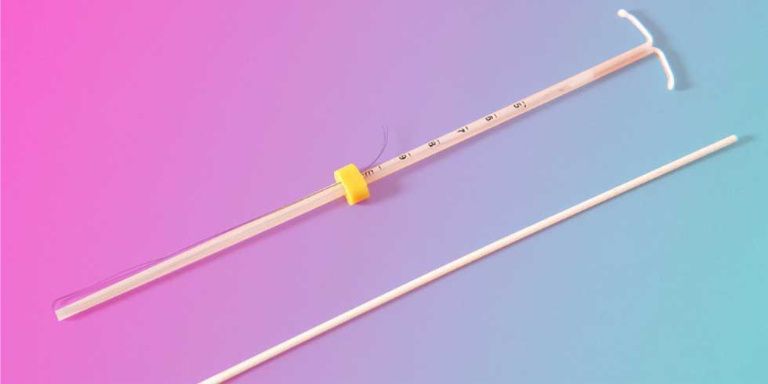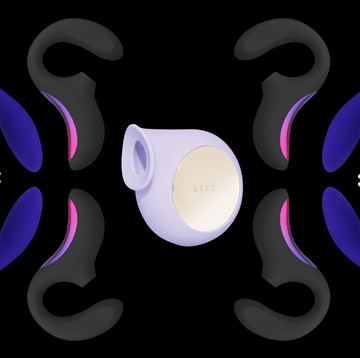The day after Donald Trump was elected president, interest in IUDs was at all-time high. Faced with the reality of president-elect who had vague plans to roll back the Affordable Care Act, women were urging each other to go get IUDs now, before the loss of the ACA made them potentially unaffordable. While IUDs are one of the most effective forms of birth control and can be cheaper than the pill over an extended period of time, the upfront cost can skyrocket above $1,000, a price point that puts them out of reach for many women. The ACA made IUDs free — or practically free — for most women.
The ACA still exists. But Republican lawmakers have already started laying the groundwork for an ACA repeal — the Senate voted last week to approve a budget blueprint that would allow them to eviscerate major points of the ACA. Tom Price, Trump's pick to be the secretary of Health and Human Services, doesn't support women having free birth control. Given all this, women are taking advantage of the deeply discounted IUD while they still can. IUD appointments at Planned Parenthood clinics were up 900 percent after the election.
Dr. Martha Simmons, a family physician at a community health center in East Harlem, told Cosmopolitan.com that she approximates IUD appointments at her clinic have tripled since the election. Women are coming to Simmons to ask what the election means for them in terms of affordable health care, and they're asking specifically about IUDs. Simmons can really only do her job, which is to counsel women based on their own personal circumstances and birth control needs, despite the anxiety in the current climate.
But there's one other thing she's doing to help women who are deeply terrified of losing access to affordable contraception. "Patients will bring up that they're worried about insurance covering removing [their IUD]," Simmons said. "So the other thing that we're doing is — for patients who are worried that they won't have coverage to get their IUDs removed — we're leaving the strings long enough so that the patients could self-remove the IUD if they wanted."
IUD removal isn't as expensive as insertion — for one thing, you aren't paying for the device, and a removal is a much simpler procedure that any physician familiar with IUDs should be able to perform. Still, the recommended course of action is to schedule an office visit to have an IUD removed, if and when a woman decides she no longer wants it. But for women who may not have health insurance anymore, an office visit to have a doctor pull on some strings just might not be financially feasible. Dr. Stephanie Long, a family physician in San Francisco, explains that costs for a removal visit can vary depending on coverage, but could be up to a few hundred dollars if a patient is required to pay the full cost.
Simmons said she's simply giving women the option to leave their IUD strings untrimmed. As she explained, the physician who inserts an IUD will usually trim the strings down to 2 to 3 centimeters so that the patient can't feel them hanging down from her cervix into her vagina. Leaving strings untrimmed at the full, 4-centimeter length allows women to more easily reach inside their own vaginas and remove their IUDs themselves.
Even before Trump was elected and fears of ACA repeal started to swell, some doctors allowed their patients to elect for longer IUD strings, should they want to literally take matters into their own hands and pull the device out at home. Dr. Long, who performs a lot of IUD insertions, said she heard of doctors letting women leave their strings long before the election as a way to give women a greater sense of control over when they can get pregnant. "That's been around for a long time," Long said. "I think one of the concerns with IUDs, for some women, is that they want a little bit more control, so the idea that they couldn't stop their method when they wanted to without an office visit doesn't sit well for some people. With a birth control pill, if you want to stop it, you stop it."
One woman, 24-year-old Sarah-Grace, accidentally pulled out her own IUD when removing a Diva Cup and didn't even notice at first. She told Cosmopolitan.com the experience "wasn’t really that intense," which perhaps explains the thousands of results and testimonials you get when you google "IUD home removal." But just because you can doesn't mean you should.
An office visit with a physician who knows exactly what they're doing is always going to be the best way to have an IUD removed. It's what most doctors strongly recommend. While rare, there are some risks associated with IUD removal. If a woman grabs just one of the strings and not both, she might snap off one string and make the IUD more difficult to remove properly. There's a chance she might only partially remove the IUD and have to go in for a removal anyway, which will be more uncomfortable than it would have been to pull the entire thing out on the first try. There's also a small possibility an IUD might have broken apart inside the uterus, and a doctor is best able to make sure that the entire IUD comes out in one piece.
There are additional risks to leaving the IUD strings at their full length, even if a woman doesn't plan to self-remove. Dr. Rebecca Brightman, a ob-gyn in private practice in New York City, said that longer IUD strings have a greater likelihood of getting wrapped around a tampon, which may lead to the IUD being partially or fully pulled out when a woman tries to remove her tampon. A sexual partner is more likely to feel longer strings, and they're just more likely to cause discomfort in a patient who can feel them hanging down from her cervix into her vagina.
For those reasons, Brightman said she would personally never recommend a woman remove her own IUD. "If someone wanted their IUD removed, I'd rather see them and talk about other birth control options," she said. "In my practice if I had to do [a removal] pro-bono, I would. We as ob-gyns have some sort of obligation to do that."
Follow Hannah on Twitter.













